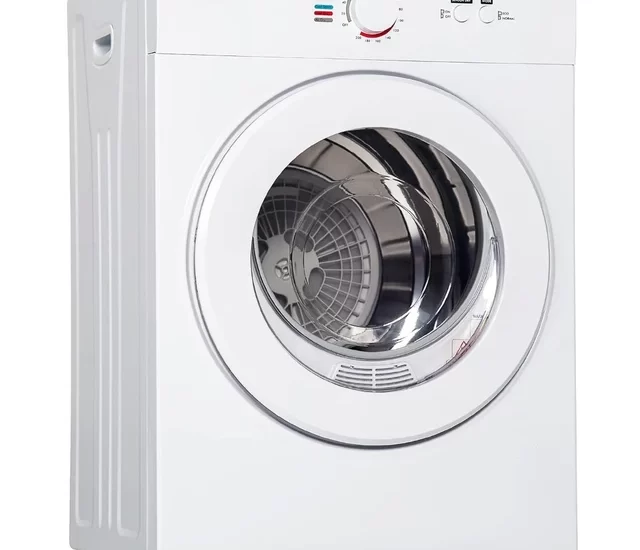 Introduction:
Introduction:
A washing machine that shakes violently during the spin cycle can be a cause for concern. Not only can it be noisy and disruptive, but it can also potentially damage the appliance or surrounding structures. If you’re experiencing this issue, it is crucial to identify the reasons behind the violent shaking and take appropriate measures to resolve it. In this article, we will explore the potential causes of a washing machine shaking violently in the spin cycle and provide guidance on how to address the issue. By understanding the underlying factors and implementing appropriate solutions, you can ensure a smoother and safer laundry experience.
 Some common types of washing machines:
Some common types of washing machines:
There are several types of washing machines available, each with its own specific features and functions. Here are some common types of washing machines:
Top-Loading Washing Machine:
Top-loading washing machines have a vertical drum and a lid on the top that opens for loading and unloading clothes. They are typically more affordable and easier to load and unload compared to front-loading machines. However, they generally use more water and energy and may have a lower capacity.
Front-Loading Washing Machine:
Front-loading washing machines have a horizontal drum and a door on the front for loading and unloading clothes. They are known for their superior cleaning performance, energy efficiency, and larger capacity. Front-loading machines generally use less water and have more advanced features, but they tend to be more expensive.
High-Efficiency (HE) Washing Machine:
High-efficiency washing machines are designed to use less water and energy compared to traditional machines. They are available in both front-loading and top-loading models and require specially-formulated detergents. HE washing machines typically have advanced features for water and energy savings.
Compact Washing Machine:
Compact washing machines are smaller in size and designed for limited spaces, such as apartments or small laundry rooms. They often have a lower load capacity but offer basic washing functions that larger machines provide.
Washer-Dryer Combo:
Washer-dryer combo machines are integrated units that combine a washing machine and a dryer in one. They are convenient for those with limited space as they eliminate the need for a separate dryer unit. However, the drying capability of combo machines may be less efficient compared to standalone dryers.
Portable Washing Machine:
Portable washing machines are small, lightweight, and designed for easy transportation. They are ideal for camping trips, small apartments, or situations where a permanent fixture is not possible.
Smart Washing Machine:
Smart washing machines are connected to the internet and can be controlled remotely using smartphones or other smart devices. They often have additional features such as Wi-Fi connectivity, remote monitoring, and customized washing cycles.
When choosing a washing machine, consider factors such as capacity, energy efficiency, available space, desired features, and budget. Each type of washing machine offers its own benefits and limitations, so it’s important to find the one that best suits your specific needs.
 Introduction to Washer Shaking During the Spin Cycle
Introduction to Washer Shaking During the Spin Cycle
When a washing machine shakes violently during the spin cycle, it can disrupt the laundry process and indicate underlying problems.
A. Impact on Appliance: If not addressed, violent shaking can lead to premature wear and tear on the washing machine’s components and affect its overall performance.
B. Potential Damage: Excessive shaking may cause the washing machine to move out of position, resulting in damage to the appliance itself or nearby structures.
Unbalanced Load
One of the most common reasons for a washing machine shaking violently is an unbalanced load.
A. Load Distribution: Uneven distribution of the laundry inside the drum can create disbalance and result in violent movements during spinning.
B. Overloading: Overloading the washing machine can cause it to struggle to distribute the weight evenly, leading to shaking.
C. Large Items or Single Items: Heavy or bulky items, such as blankets or comforters, or washing a single item in the machine can create an imbalance and cause violent shaking.
Leveling and Stability
Improper leveling and stability can contribute to a washing machine shaking during the spin cycle.
A. Uneven Surface: Placing the washing machine on an uneven surface can disrupt stability and lead to shaking. Ensure that the machine is on a level and sturdy floor.
B. Adjustable Feet: Check if the washing machine’s adjustable feet are properly positioned and leveled. Adjust them as necessary to maintain stability.
C. Tightened Connections: Ensure that all the connections, such as water hoses and power cords, are securely tightened and not contributing to the shaking.
Mechanical Issues
Mechanical issues with the washing machine’s components can cause violent shaking during the spin cycle.
A. Damaged or Worn Shock Absorbers: The shock absorbers in the washing machine may be damaged or worn out, leading to increased vibrations and shaking. They may need to be replaced.
B. Faulty Suspension Springs: Broken or worn suspension springs can result in excessive movement and shaking during spinning. Replacement may be necessary.
C. Damaged Drum Bearings: Damaged drum bearings can cause imbalances in the spinning process, leading to violent shaking. A professional technician may need to replace the bearings.
 Resolving the Issue
Resolving the Issue
Addressing a violently shaking washing machine requires a systematic troubleshooting approach.
A. Load Distribution: Ensure an even distribution of the laundry inside the drum. Rearrange the items if necessary.
B. Load Size: Avoid overloading the washing machine. Follow the manufacturer’s guidelines for the recommended load size.
C. Leveling: Check the machine’s stability by using a bubble level. Adjust the adjustable feet as needed to ensure proper leveling.
D. Shock Absorbers: Inspect the shock absorbers for signs of damage or wear. Replace them if necessary.
E. Suspension Springs: Examine the suspension springs for any signs of damage or breakage. Replace them if needed.
F. Drum Bearings: If the drum bearings are suspected to be the cause of the shaking, consult a professional technician for inspection and replacement if required.
Preventive Measures
Taking preventive measures can help avoid future occurrences of violent shaking in the washing machine.
A. Even Distribution: Always evenly distribute the laundry inside the drum to avoid imbalances.
B. Proper Load Size: Avoid overloading the washing machine and follow the manufacturer’s guidelines for load capacity.
C. Regular Maintenance: Perform routine maintenance tasks, such as cleaning the drum and checking for loose connections, to ensure the smooth operation of the washing machine.
 Conclusion
Conclusion
A washing machine shaking violently during the spin cycle can disrupt the laundry process and potentially cause damage. By understanding the common causes, such as an unbalanced load or improper leveling, and addressing them with appropriate solutions, you can resolve the issue. Be mindful of load distribution, avoid overloading, and ensure proper leveling and stability. Inspect and replace damaged shock absorbers, suspension springs, or drum bearings as needed. By implementing preventive measures and practicing regular maintenance, you can enjoy a smoother, quieter, and safer laundry experience without the violent shaking of your washing machine.





